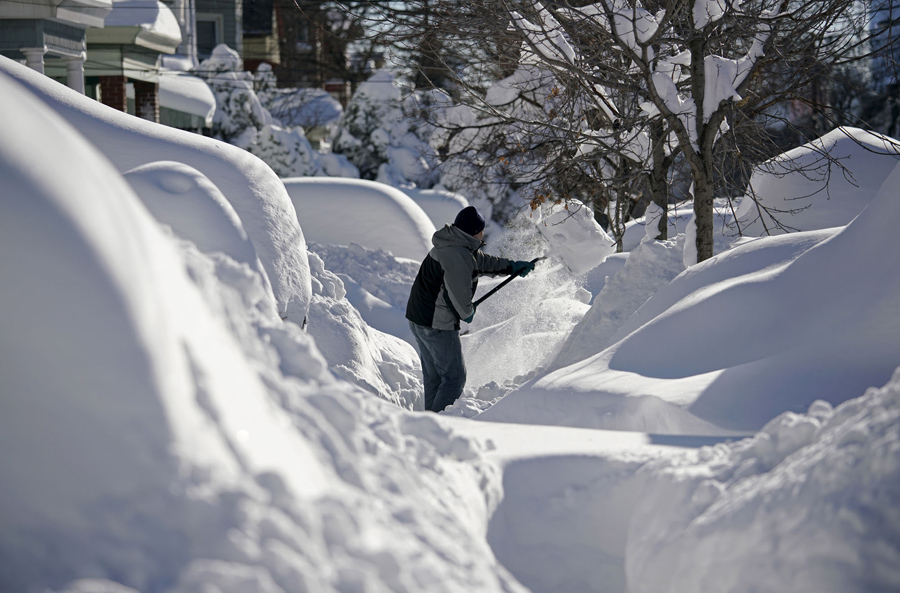This is the photo that keeps coming up in the papers and the slide shows. “A resident shovels snow from the entrance to his home in Union City, New Jersey, across the Hudson River from Midtown Manhattan, after the second-biggest winter storm in New York history, on January 24, 2016.” That’s the caption, just in case you were wondering about the who, what, where, and when. But that isn’t saying much.
Snowstorm photographs can’t avoid being stock images: whatever they are, you’ve seen them before. This one is no exception, so novelty is not part of the appeal. Nor is it a particularly striking photograph. Whatever its features, I can think in every case of photos that displayed each one more directly: the undulations of white softness draping the furniture of the world, the gentle play of light and shadow on snow, the trees heavy with their winter foliage, the monster drifts, the daunting task of digging out. . . . This photo has them all, but each quality is stacked up with the others, and they seem to subtract from one another rather than produce a cumulative effect. So it really is an aftermath photo: emphasizing not the massive, magical inundation but instead the individuated labor of clearing a way back to the familiar routines of ordinary life. And yet it is in its own way captivating. Why?
The answer, I think, is that it provides a gentle reminder of just how good life can be. Can be: not in every case. That snowstorm will have caused car wrecks, heart attacks, and other bad news, and eventually we’ll be told how the costs for snow removal and lost business will run to the millions or billions. But there is another story that won’t be told, except perhaps through this photograph.
If a snowstorm is your big problem this week, you’re doing fine. If you have to shovel snow but can walk back into a warm brick brownstone where the heat is always on, where water always flows sure and clean at the turn of your hand, where you can look up and down the street and see everyone else having the same amenities. . . . . That is the good life.
The photo shows one kind of abundance–the unusually large covering of snow–to say something about another kind of abundance. What covers reveals. The snow temporarily removes all the cars, mailboxes, and much else from view, but we know that they are there. It features a man working with a blade on a stick, but we know that is the closest he gets to experiencing primitive scarcity and vulnerability. By showing how much can be temporarily stopped, it reminds us how much activity and prosperity are taken for granted.
And there is more. As the snow also slows us down, it reminds us how we allow some of our riches to diminish others. We have so much that we may forget to stop and marvel at the beauty of the world. A snowstorm is beautiful, but so is a cloudy day. It’s wonderful to curl up with a cup of coffee on an unexpected day off and look across a glistening landscape, and it’s wonderful to take a moment amid the morning rush any other day.
Come to think of it, that’s something you can do any time you look at a photograph like this one. And others as well.
Photograph by Rickey Rogers/Reuters.

Discussion